things i noticed during the first walk through the gallery
storyboard of current Miller Gallery experience
September 24, 2017:
My first visit to the Miller Gallery was pretty simple. I was mostly interested in the exhibit itself around the gallery, but i noticed the themes colors of hot pink laced throughout the museum. It was immediately taken by the branding throughout the gallery space.
interesting human factor design here with the OPEN signage only on the right door (creates a subtle suggested path)
Upon entering, visitors are greeted by the desk attendant and then follow a path around the first floor gallery. Because of the wall positioning, the user is pretty much guided into a slow paced circular path around the space. The pieces are displayed in close proximity to each other, inviting museum goers to view them closely and at their own pace. In addition to this, there are also display cases in the middle of the room, adding to the close in proximity viewing of the artwork.
When it came to making the model of the space, I began with cutting out the floor shape of the gallery to 1':1" scale and then the walls quickly followed. After initially messing up the shape of the floor, I decided to make the best of it and used gesso to add texture to the gallery floor.
Daphne had advised against gluing down the walls because our models will be subject to many changes and iterations in the future. Thus I fastened the walls using a right angle technique where significant points of the model were secured, but not glued. This allowed me to remove the walls in case I needed to make alterations to the model and my physical concept.
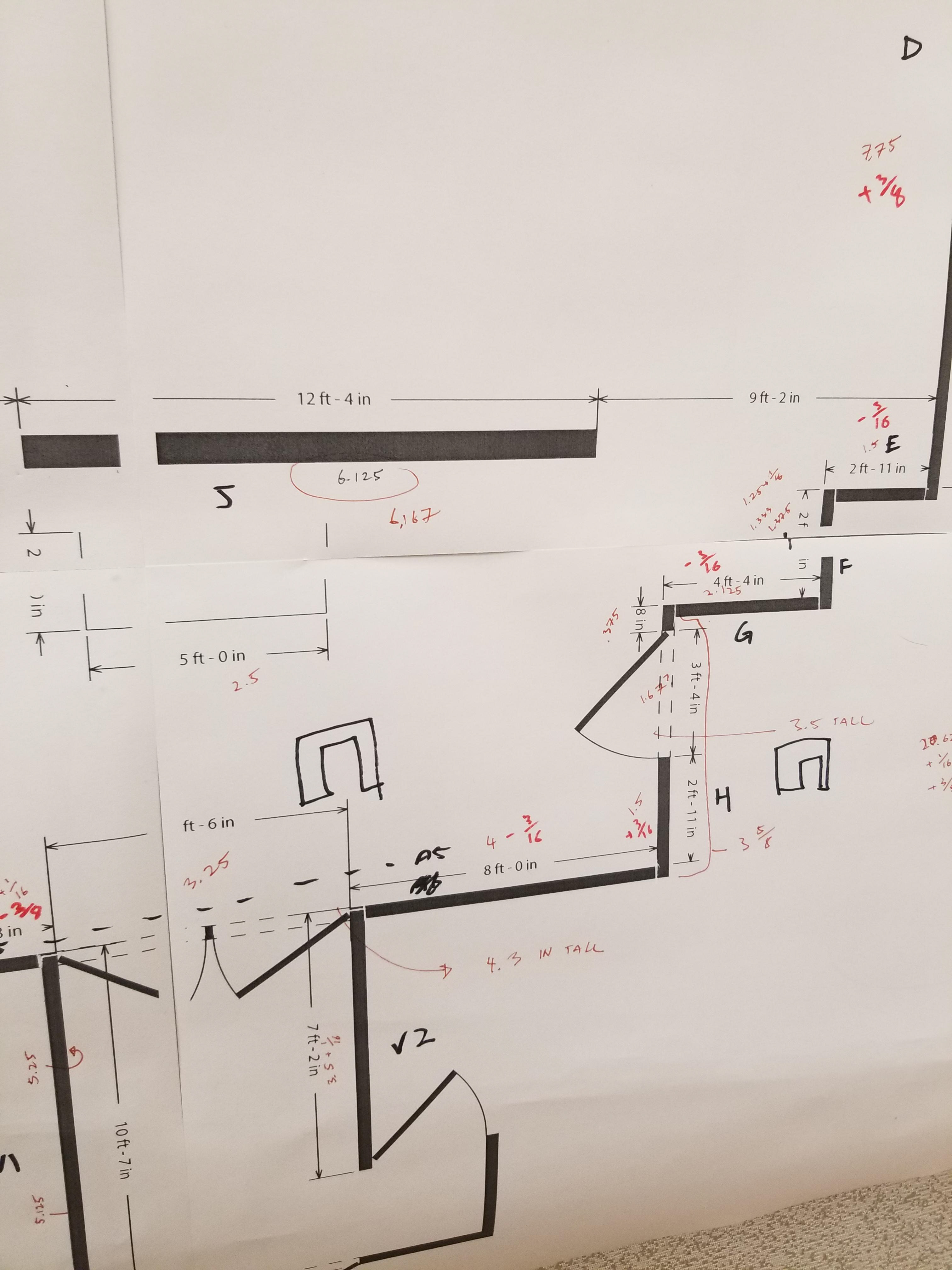
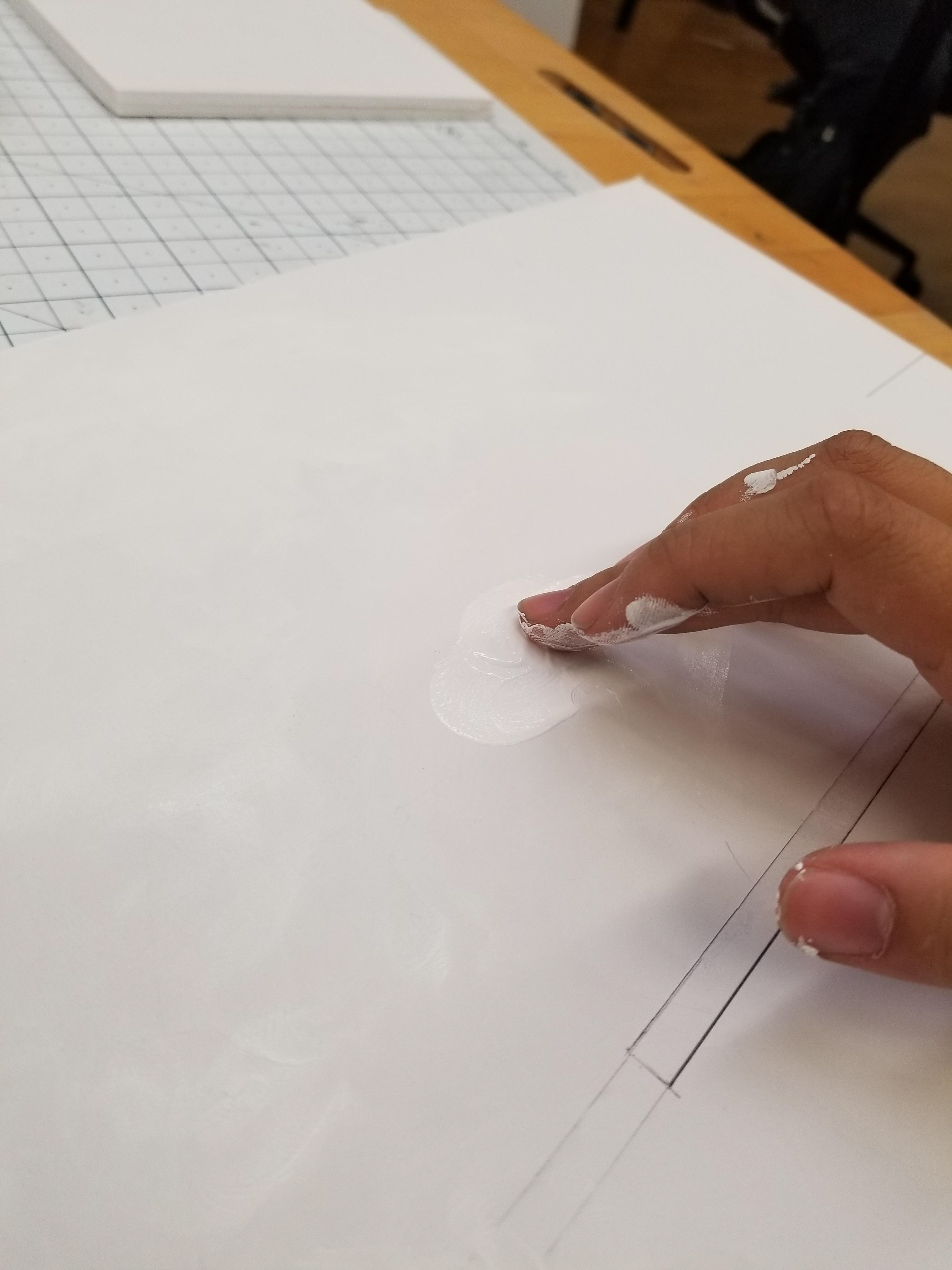
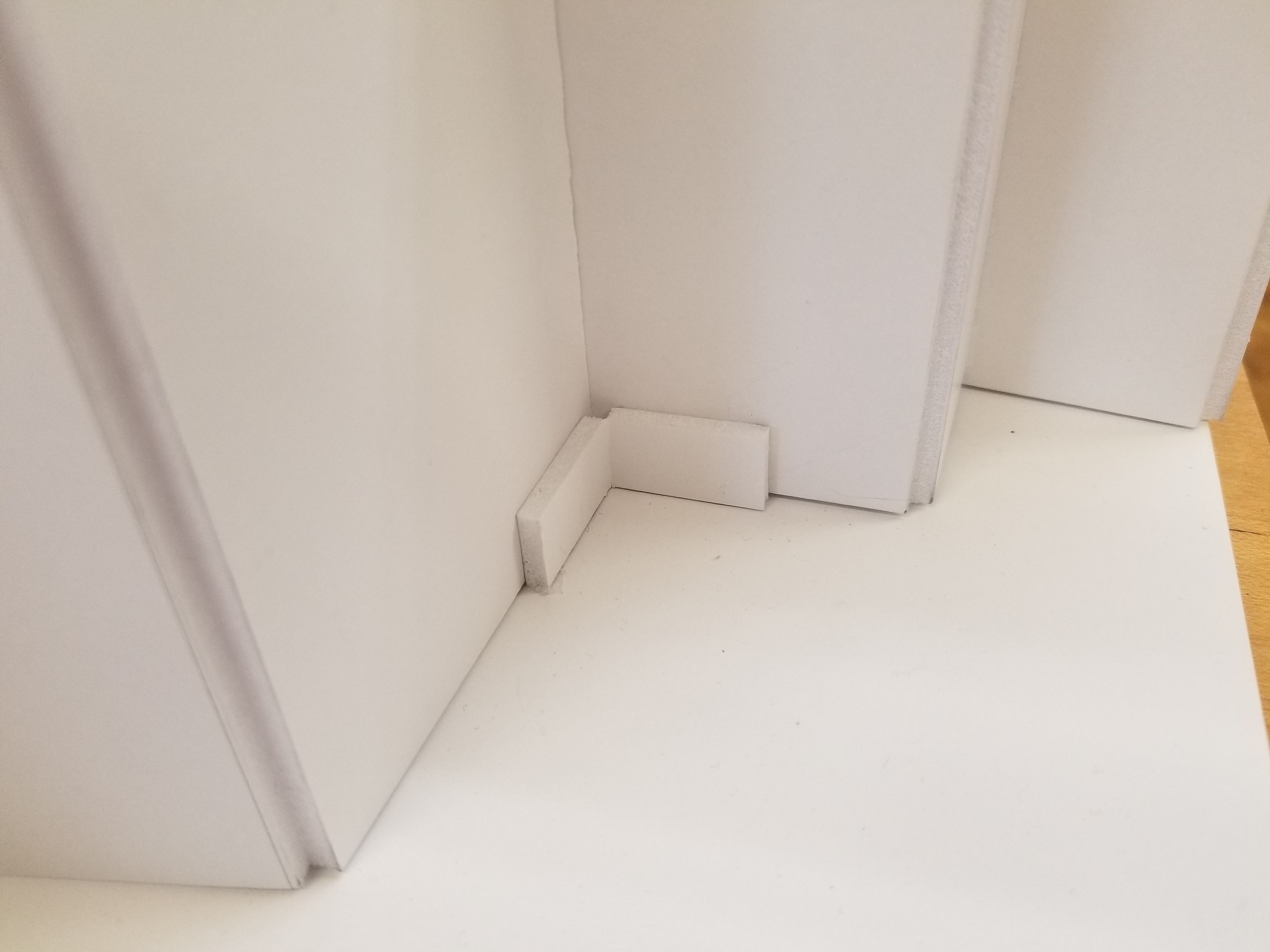
While we were making models in our own time, we were also learning how to digitally mock up a space. Below is my first attempt at importing a photo onto the wall of a digital space. I will admit that this aspect of the project took some time to get used to because I am self-proclaimed technologically challenged.
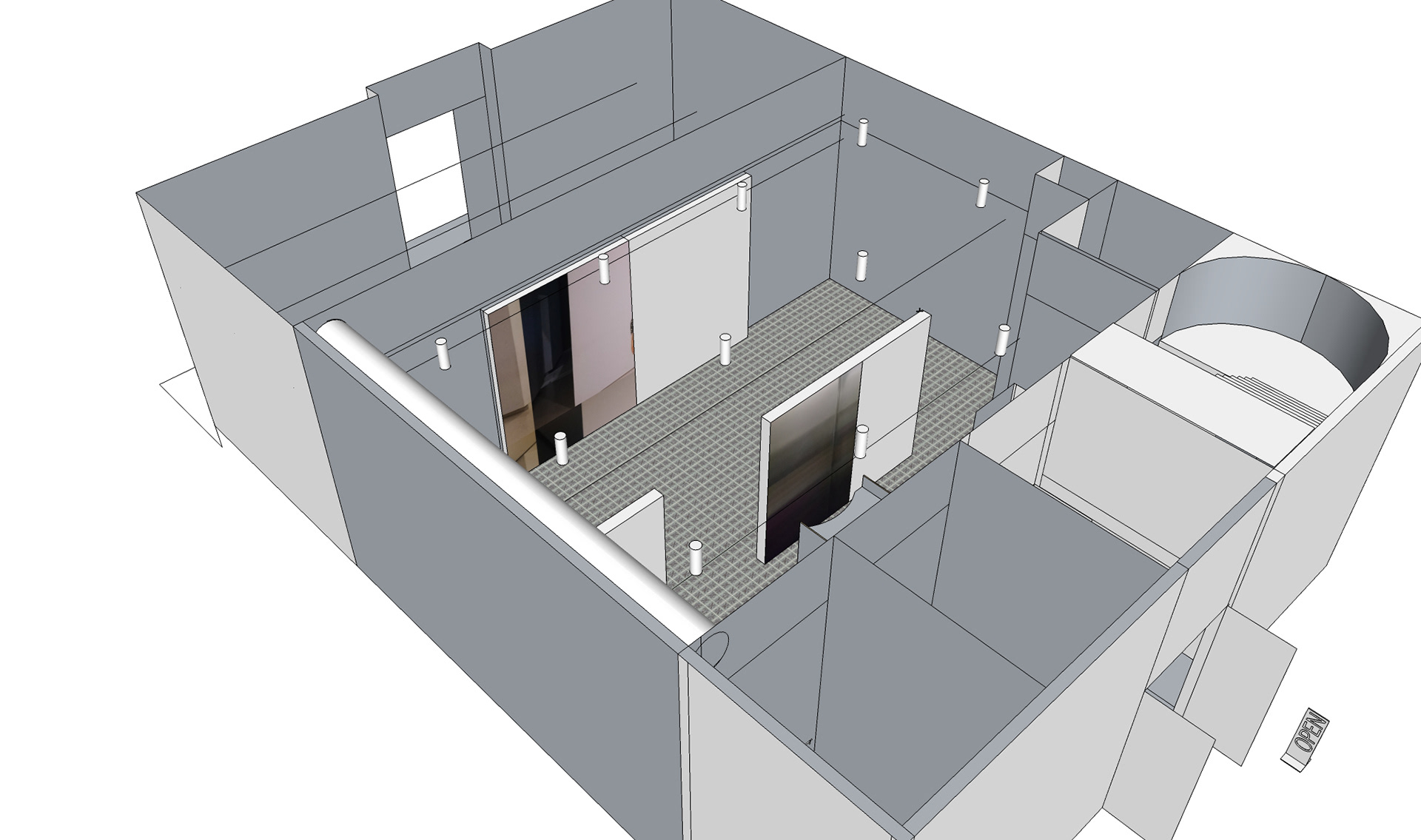
October 2, 2017:
After finishing our physical and digital models, I began ideating with potential spatial designs. Starting off with a new storyboard, I knew I wanted to utilize the reflective themes consistent in Meerdo's work.
As a solution, I thought I could utilize reflective tape along the floor and walls to help guide the visitor through the exhibit. At this point in the process, I thought I would display Meerdo's pieces from Iceland and his most recent "Active Denial" pieces. I want to focus on Meerdo's development as an artist and how he transitioned from large scale installations to smaller scale pieces. His focus as an artist shifted throughout his career up until his piece at the Mattress Factory, the pieces I chose to display in the Mattress Factory were meant to highlight it.
I mocked up the physical model of my storyboard with foam core and adjust my existing model accordingly.
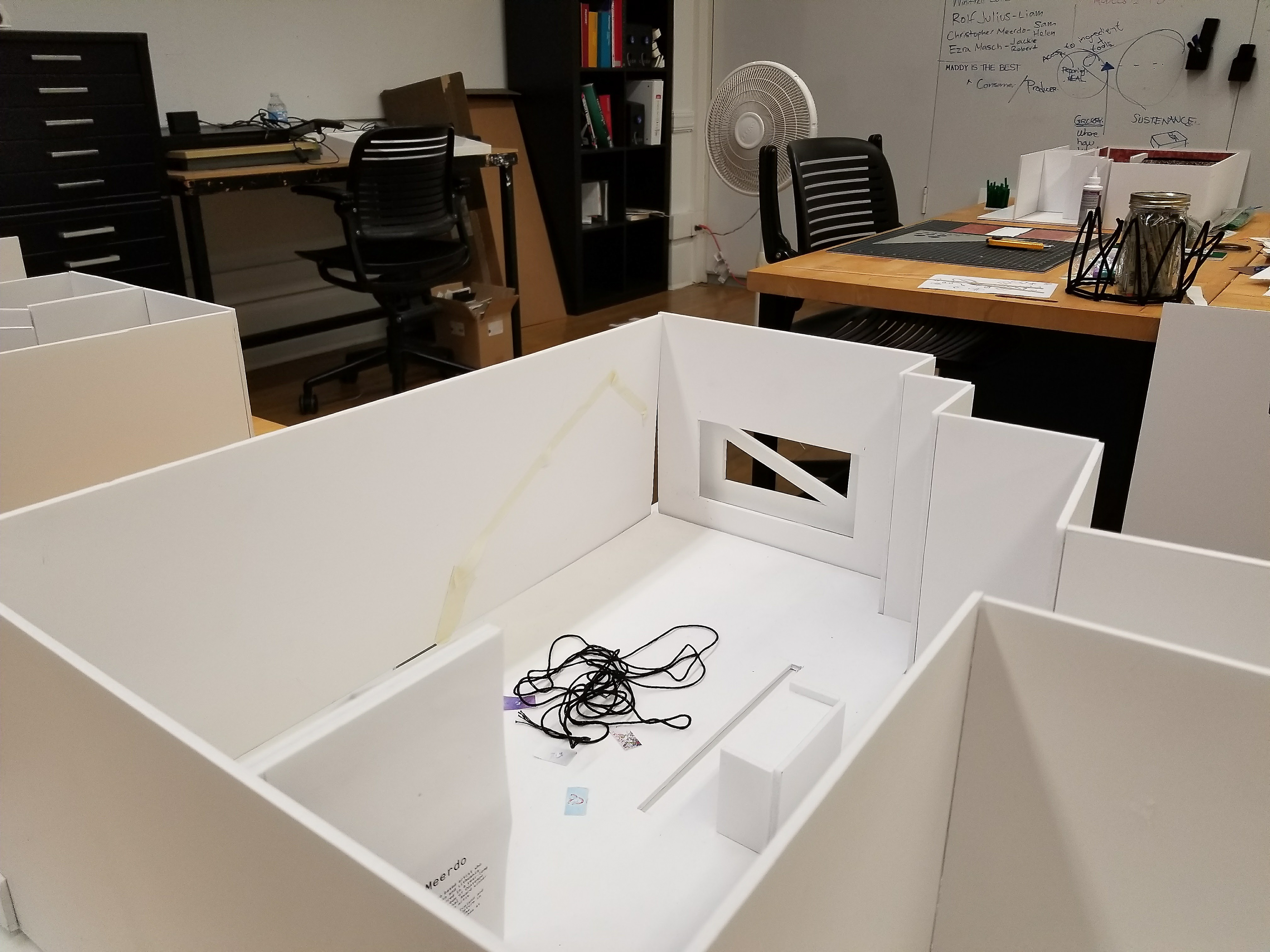
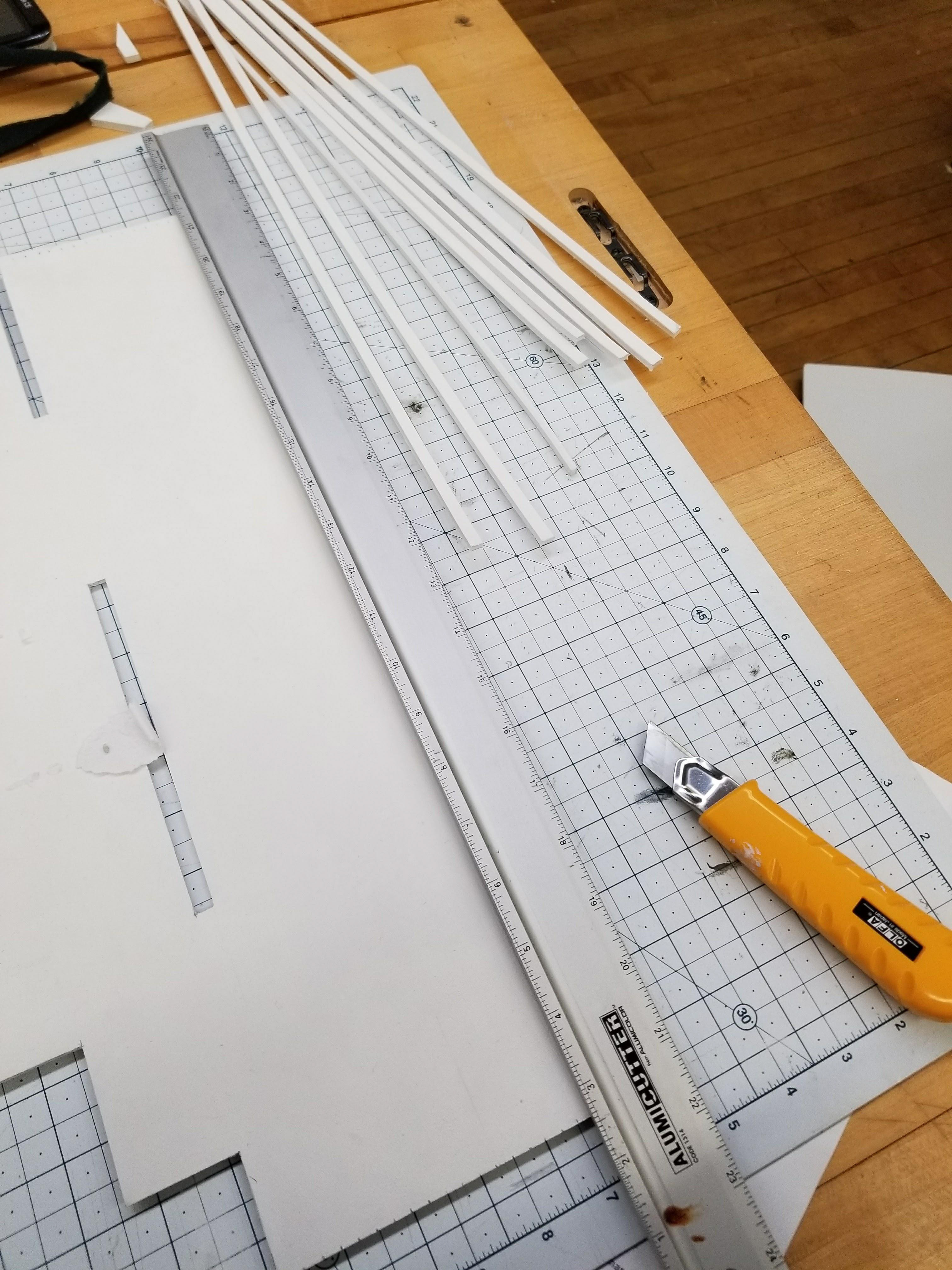
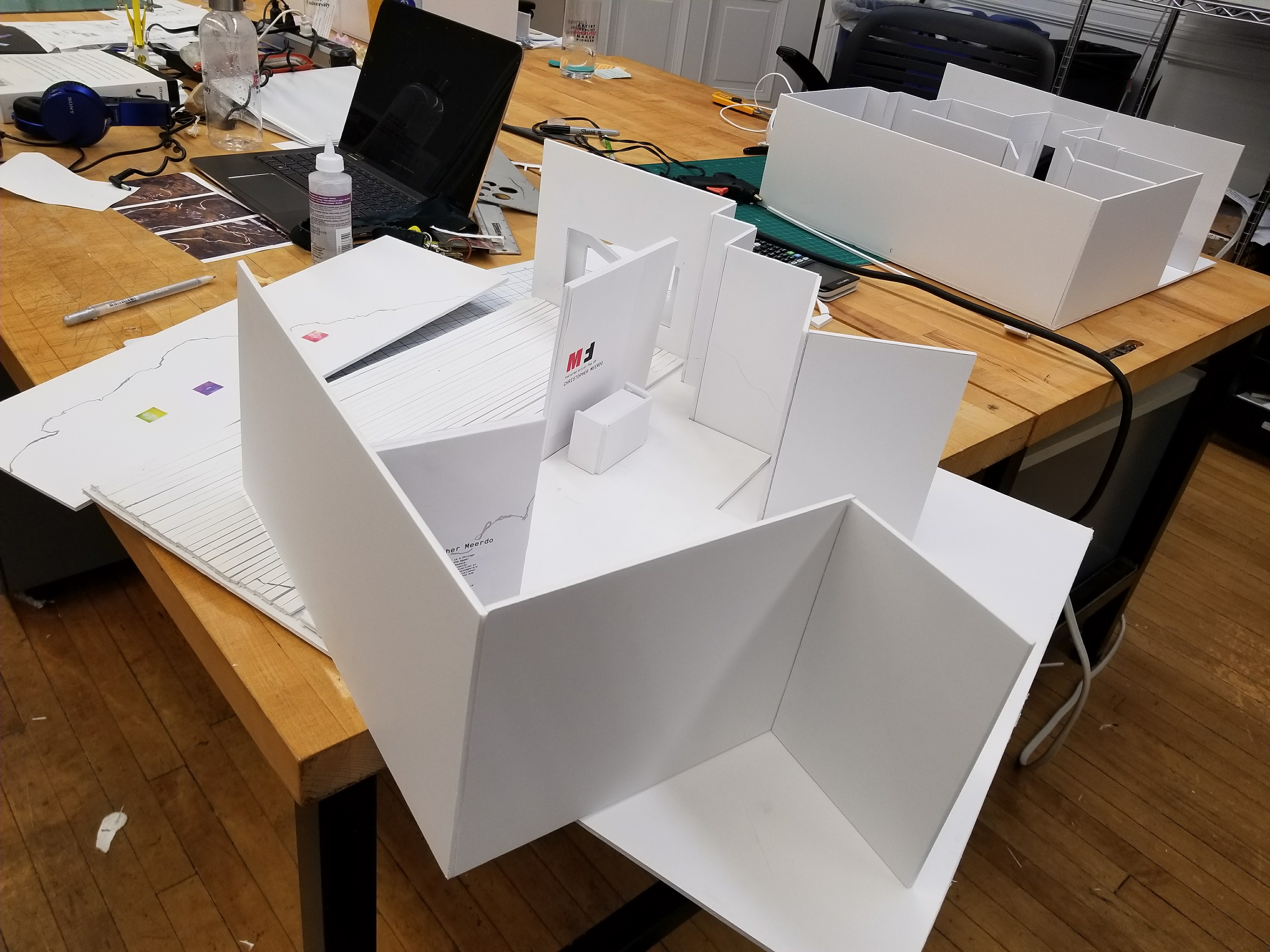
After meeting with Peter in class, and he encouraged me to push my ideas further. For now I had mocked out the reflective tape with masking tape. As a result, the model itself looks rather haphazard and I'd like to fix it as soon as possible.
I wanted to think of some ways to push my model making further and how I could better communicate my ideas and thought process.
When I was researching Christopher Meerdo, I was taken by his use of VR on his website. This got me thinking about how I could potentially integrate it into my exhibit. Using screen mirroring, I was able to project Meerdo's VR onto my phone and cut a slot to fit my phone in the exhibition in order to represent a projected interaction in my proposed environment.
I cut out a slot to fit my phone against the wall so I could better communicate what the projected VR would look like. I think it would be interesting to allow visitors to interact with the VR using existing Xbox Kinect technology, then the visitors wouldn't need extraneous hardware and could navigate through the visual world. To further engage the visitor, I think the gallery could coordinate with Meerdo and create a VR scavenger hunt within the digital environment. It would encourage users to interact with the exhibit for longer and provide a memorable, unique experience for gallery-goers.